May 07, 2019
Greetings, and welcome to Axios Space, our weekly look at the science and business of space exploration.
Please send your scoops, tips, questions and alien abduction stories to [email protected], or just reply to this email.
1 big thing: We wouldn't know it if we found another Earth
/2019/05/06/1557172184093.gif?w=1920)
Illustration: Rebecca Zisser/Axios
Technology designed to hunt for alien planets has progressed in the 27 years since we found the first planet outside of our solar system. However, researchers still can't tell with confidence whether any newfound worlds can sustain life — and might not be able to for years.
The big picture: Scientists have detected almost 4,000 planets circling stars light-years away from our own solar system.
- These exoplanets — worlds outside of our solar system — are typically found when they pass in front of their star, allowing spacecraft like NASA's TESS to detect minuscule dips in light that happen during those transits.
- Other telescopes have detected exoplanets by measuring the small wobbles of a star created by a planet's gravity.
- Most exoplanets we've identified are more massive than Earth, and many aren't orbiting stars like our sun.
- That leaves about 20 planets so far that are thought to be small enough and the right distance from their stars to be potentially habitable.
Between the lines: Using current methods, scientists can track a planet's orbit and even get a decent measurement of its mass, but beyond that, it's hard to know exactly what's happening on a small planet like our own.
- It's not enough to know if an exoplanet is in its host star's habitable zone — the orbit where liquid water could, in theory, be sustained on the surface.
- Scientists still need information about a planet's composition, atmosphere and geology to make an educated guess at habitability.
- Even an exoplanet's core would have bearing on its habitability in that a liquid iron core like Earth's could help produce magnetic fields that would shield a planet's surface from incoming radiation.
Some of the most convincing evidence that a planet is Earth-like may come if scientists can detect atmospheric water vapor.
- However, today's most powerful telescopes aren't sensitive enough to parse out the composition of a relatively small exoplanet's atmosphere.
- "I absolutely believe there's life somewhere else. I just can't point to the planet yet and tell you which one it is," says NASA exoplanet scientist Steve Howell.
What's next? Scientists need new tools in order to know if they've found a world truly like our own.
- NASA's James Webb Space Telescope (JWST), expected to launch in 2021, might be able to investigate the atmospheres of small planets, though it's likely best suited for dissecting the atmospheres of larger, gaseous planets.
It will probably take until the generation of telescopes after JWST to enable scientists to find a truly habitable exoplanet.
- The Large UV/Optical/IR Surveyor is a NASA concept for a space-based observatory that could directly image a small planet's atmosphere for the first time.
While the public and other researchers might be impatient to find another Earth, exoplanet scientists are in it for the long haul.
- "Everyone wants to meet the little, green humanoids," MIT exoplanet scientist Sara Seager told Axios. "We're not doing that, but we'll find enough to believe and then to keep the search going. It's going to be, like, a 100-year thing, and we're only 20, 25 years into it."
2. Boeing's lunar gateway concept is open for testing
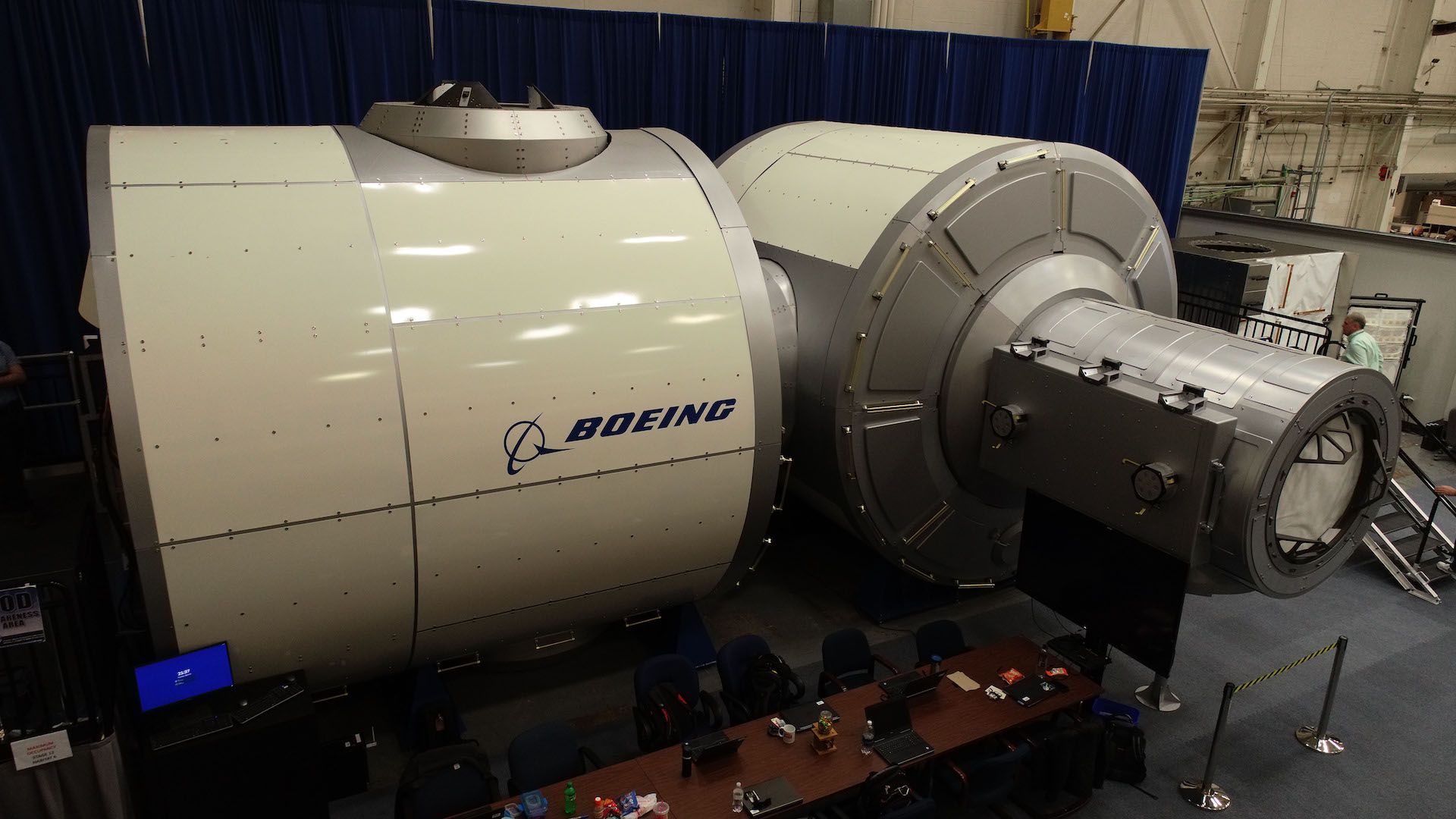
Boeing's lunar gateway demonstrator. Photo: Boeing
Boeing wants to take lessons learned from the International Space Station (ISS) to meet NASA’s ambitious 2024 deadline to get humans back to the moon.
Driving the news: The longtime NASA contractor just finished up construction of a full-scale, ground-based model of its prototype for the space agency’s lunar gateway. NASA will now start running the prototype through a series of tests.
- The model — located in Huntsville, Alabama — includes habitation and airlock modules based on Boeing's work developing the ISS.
- "We have a lot of cool stuff in there," David Pederson, Boeing's test team lead engineer for the gateway, said during a press briefing last week.
- The demonstrator includes an exercise area with a window, a galley with working water and science experiment boxes.
Details: NASA hopes to launch a lunar gateway as an orbiting base of operations from which astronauts could launch to the lunar surface.
- Boeing is confident its gateway concept, if selected, would be ready to launch ahead of a 2024 landing.
- According to Boeing, the modules are designed to launch separately, with the power and propulsion module heading to lunar orbit in 2022.
- The habitation module would launch one year later.
- The modules are designed to snap together with little assembly required.
But, but, but: Boeing isn’t the only company working on a lunar gateway concept.
- Lockheed Martin has finished its demonstrator. Northrop Grumman, Sierra Nevada Corporation and Bigelow Aerospace are still working toward turning their models over to NASA for testing.
- As of March, the space agency says it plans to incorporate the best elements of the demonstrators into the final product, rather than going with one design.
Be smart: NASA's 2024 deadline is extremely ambitious and will likely take a large influx of funding provided by Congress. However, it's unclear whether the Trump administration has enough support to make that lunar mission a reality.
- The agency was expected to submit its updated budget proposal in mid-April, but that deadline came and went with no word on how much NASA will need to get the job done.
- In theory, NASA could still aim for the moon without including a gateway in its plans.
3. New space race brings new narcs
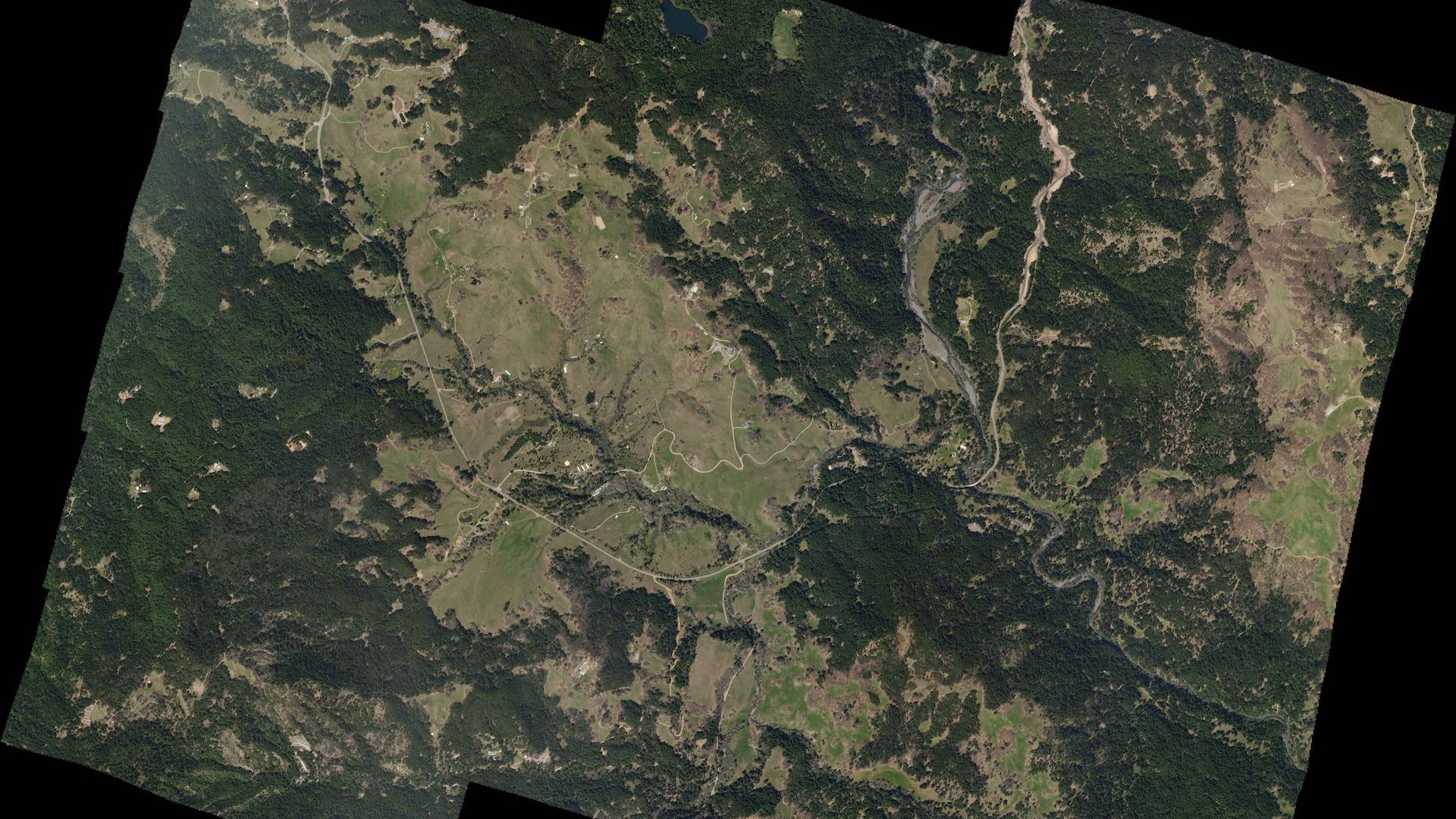
Humboldt County, California, seen by Planet. Photo: Planet Labs, Inc.
Humboldt County, California — located along the Pacific coast, north of San Francisco — is now using photos and data provided by the private satellite company Planet to find and ticket illegal marijuana cultivators.
Why it matters: The new monitoring method has revolutionized the way the county enforces permitting for growing cannabis, and it shows a surprising way that relatively cheap access to space can affect daily life.
The impact: Before the county began using Planet’s data, officials issued less than 100 citations for these kinds of infractions 2 years ago, Humboldt County deputy director Bob Russell tells Axios. But last year, the county issued 690 and collected more than $1 million in fines and penalties.
- Instead of having to rely on complaints and site visits in the large, rural county, county officials can now use Planet's data to find illegal greenhouses or other structures and track how long they've been there.
- Planet is in its second year of a 3-year agreement with Humboldt to provide satellite imagery of about 2,700 square miles of the county multiple times per year. Planet charges the county about $200,000 per year.
- While the county did use satellite data to track compliance before, it was hit or miss, according to Russell.
- Officials were dependent on Google Earth or other databases updating their imagery on their schedules.
- TerraServer, Earth-i and GeoNorth Information Systems also competed with Planet for the contract.
What’s next? Russell sees a future where this kind of data becomes even more useful. Instead of having to comb through the data, machine learning might be able to do the heavy lifting, flagging suspicious structures imaged from one month to the next.
4. Gravitational waves in real time
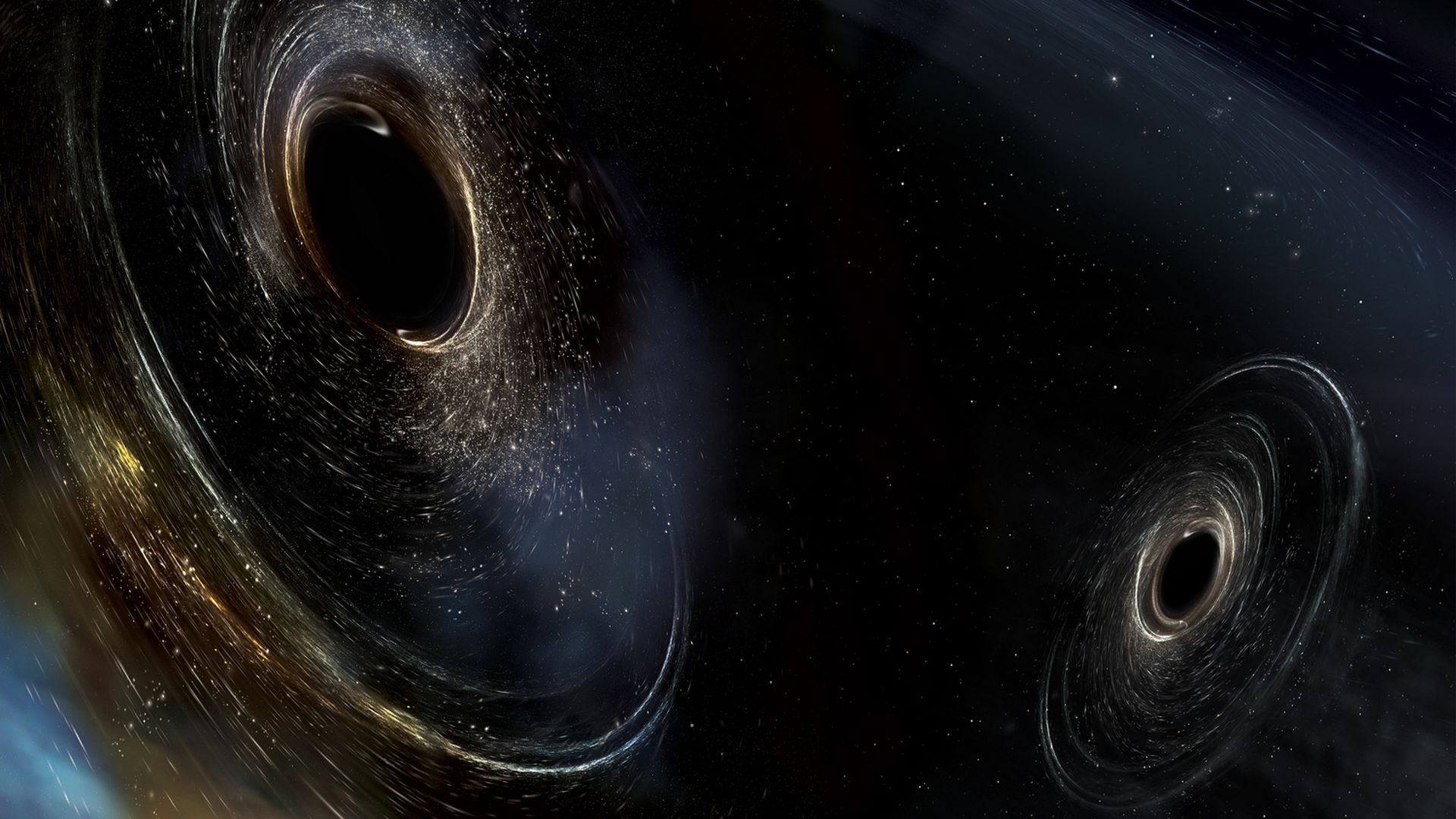
Artist's illustration of two black holes. Photo: LIGO/Caltech/MIT/Sonoma State
Ever since scientists first detected gravitational waves — ripples in the fabric of space and time created during the cataclysmic mergers of black holes and neutron stars — in 2015, discoveries have come in a slow trickle, released every few months.
Now we can expect those findings to come more like a firehose, and you can follow along in real time.
The big picture: Under previous guidelines, the researchers behind the LIGO and Virgo detectors would have waited to release discoveries until after thorough vetting and even peer review. But now, Virgo and LIGO are releasing possible detections as they occur.
- Real-time release allows scientists to quickly work to make follow-up observations of any possible gravitational wave sources.
- Members of the public can also follow along with the gravitational wave signals through the Gravitational Wave Events app and a database.
- The app will use a gravitational wave "chirp" — the noise a gravitational wave would make if converted into sound waves — to alert users to new detections.
Details: The LIGO and Virgo detectors are now 40% more sensitive thanks to upgrades made following the last observing run.
- Since coming back online in April, the collaboration has discovered 5 possible detections of gravitational waves.
- If these detections are confirmed, it would suggest these kinds of cosmic crashes are even more common than originally thought.
- One of those five possible detections appears to have been made by the collision of a black hole and a neutron star, which would be the first time such an event has been recorded.
- The signal from that merger was relatively faint, but the detection bodes well for LIGO and Virgo's future sensitivity.
- Scientists hope that the instruments will be able to pick up the signals from exploding supernovas as well.
How it works: LIGO and Virgo are designed to pick up the most minute signals from gravitational waves that warp space-time as they pass through the universe.
- LIGO’s two L-shaped detectors each have a laser running down the arms. Mirrors at the ends of the arms bounce the light of the laser back to the middle.
- If both make it back at the same time, no gravitational wave has passed, but if they don’t line up, there may have been a signal.
5. The science of a Martian dust storm
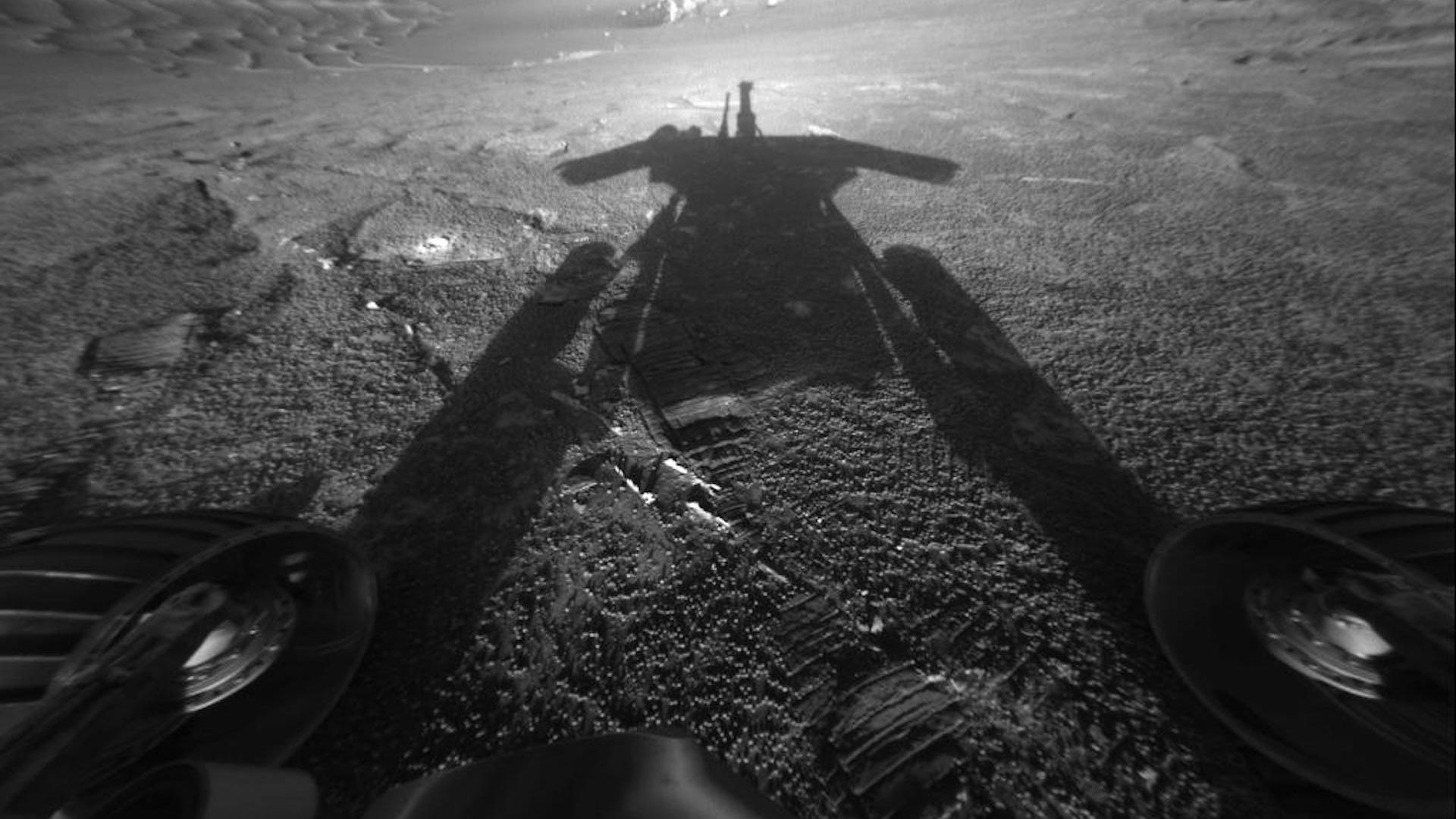
NASA's Opportunity rover casting a shadow on Mars. Photo: NASA/JPL-Caltech
The dust storm in 2018 that ended the Opportunity rover’s 15-year mission on Mars is helping scientists learn more about the Red Planet’s environment.
Why it matters: If people are to be sent to the Red Planet by the 2030s, NASA officials need to learn all they can about how dust affects spacecraft to guard against any possible problems future explorers may encounter.
What they found: Early results from data collected by the 8 rovers and orbiters studying Mars suggest dust storms may have contributed to the Red Planet becoming a barren, dry world.
- Scientists found that during the dust storm in 2018, water vapor was lofted far higher into the thin Martian atmosphere than it usually appears, making it easier for that water vapor to be lost to space instead of falling back down to the surface.
- That kind of water loss may have helped turn Mars from a wet, relatively warm world into the dry one we see now.
- Researchers also found that dust devils seemed to disappear during the storm. Those rotating winds can actually clean off solar panels like Opportunity’s, helping to get spacecraft functioning again.
- “You need to be prepared to go a while before your next dust devil passes over and cleans you off,” NASA atmospheric scientist Scott Guzewich said in a statement.
6. Out of this world reading list

Illustration: Aïda Amer/Axios
Florida's Space Coast sees entrepreneurial growth (Kim Hart, Axios)
The sun is stranger than astrophysicists imagined (Natalie Wolchover, Quanta)
A tour of Virgin Orbit's midair rocket launch pad (Loren Grush, The Verge)
Air Force requests bids for space launch services (Sandra Erwin, Space News)
Blue Origin launches and lands another test of its suborbital rocket (Axios)
7. Your weekly dose of awe: An ancient nova seen again
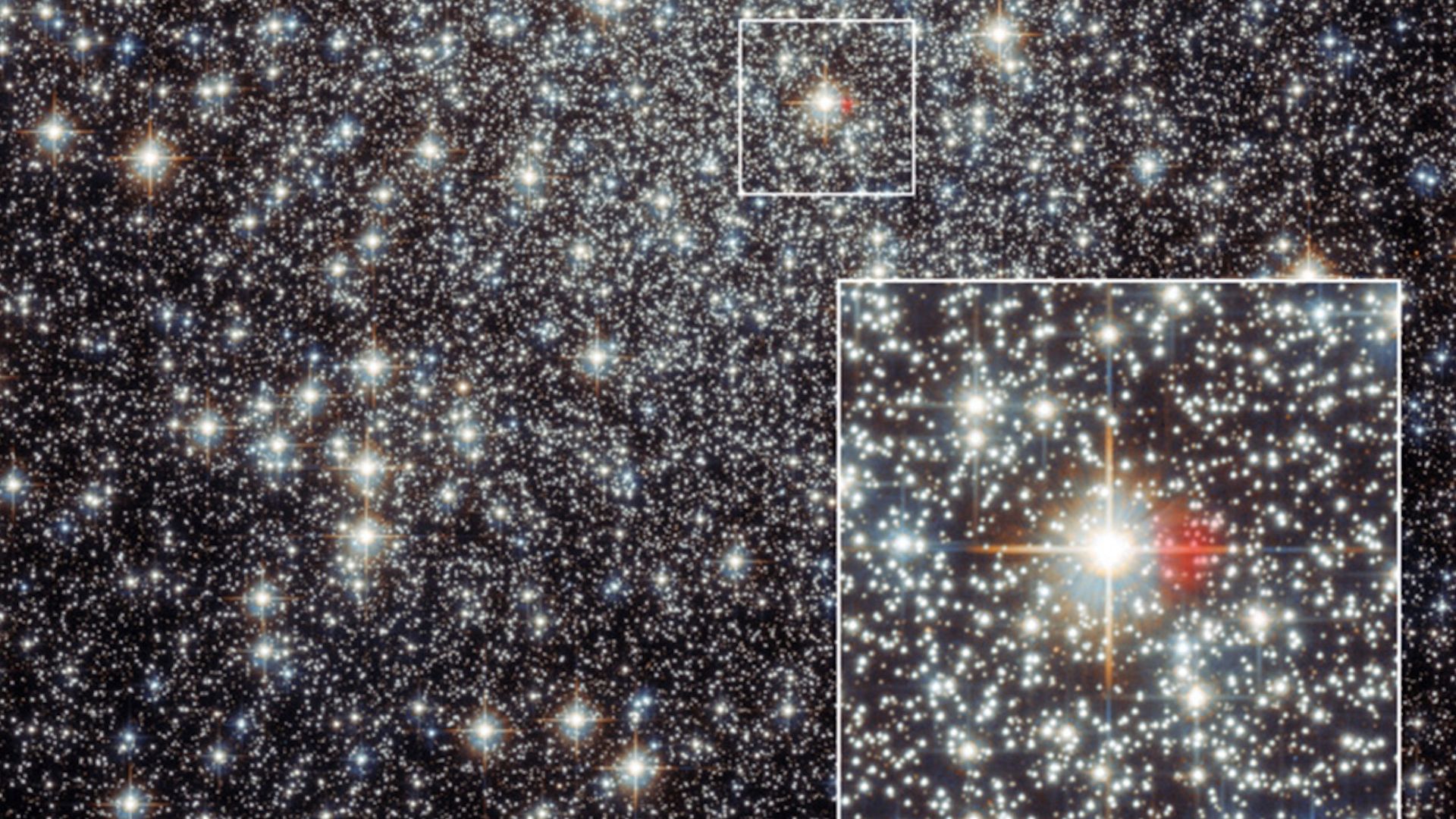
The nova near the center of globular cluster Messier 22. Photo: ESA/Hubble/NASA/F Göttgens
The remnant of a nova first seen by Chinese astronomers 2,000 years ago has been found in a star cluster about 10,000 light-years away.
- The appearance of the nova — a temporary event where a star becomes much brighter for a short period of time — was first documented by Chinese astronomers when the star suddenly lit up in the night sky in 48 B.C.
- A research team found a nebula in the Messier 22 globular cluster that matches the position of the nova first mentioned all those years ago.
- "They probably saw the original nova in the same place," co-author of a new study detailing the nova findings Fabian Göttgens of the Institute for Astrophysics at the University of Göttingen said in a statement.
That's all for this week! Thanks for reading. 🌘